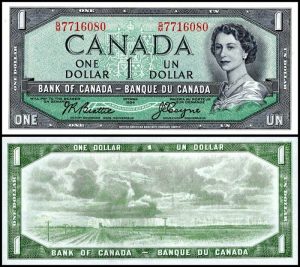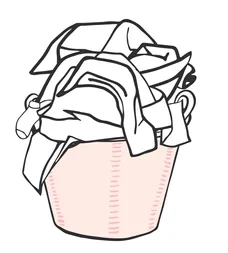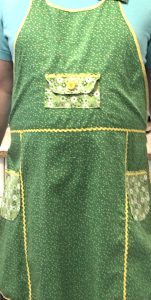 When we see pictures of mid-century housewives they always seem to be wearing aprons. Sometimes the aprons are plain and sometimes they are very elaborately decorated. Aprons not only looked nice they were important to the mid-century housewife who spent her days tending to the house and family.
When we see pictures of mid-century housewives they always seem to be wearing aprons. Sometimes the aprons are plain and sometimes they are very elaborately decorated. Aprons not only looked nice they were important to the mid-century housewife who spent her days tending to the house and family.
Food prep and cooking, as well as cleaning and gardening can be very messy. Since I retired and have been doing more cooking I have rediscovered that is always better to mess up an apron than your clothes. Think of oil or tomato splatter on a nice white cotton shirt and how that can turn into a morning of stain removal. Mid-century housewives were professional homemakers who cooked and cleaned every day and took care of a home and a large family. They encountered a lot of mess each day.
Mid-century women also had a different attitude towards clothes than we do today. While the economy was booming after the second world war, budgets were tight in most middle class homes. Many women made their own and their children’s clothing as well as home decor items as that saved a lot of money. Women wore suits for most trips outside the home. In 1955 a woman’s summer suit was around $10 while a winter suit was about $25 and blouses were around $5. The average family income was about $3500 or about $1.50 per hour. It would take 20 hours of work to pay for a good quality woollen suit. You can see that store bought clothing was relatively expensive to buy and then perhaps required dry cleaning. Homemade clothes were a lot of work to make, then perhaps hand wash and iron. Either way it took a lot of time or money to get clothes. So people didn’t have a walk in closet full of fast fashion easy care clothing. They had a much smaller wardrobe and wore their clothes for many more years than we do. Since much clothing was made from natural fibres like wool and cotton, they had to take more time and care in cleaning their clothes than many of us do today. There was no convenience of throwing a load of laundry into the washer and dryer every morning for most housewives at this time.
family income was about $3500 or about $1.50 per hour. It would take 20 hours of work to pay for a good quality woollen suit. You can see that store bought clothing was relatively expensive to buy and then perhaps required dry cleaning. Homemade clothes were a lot of work to make, then perhaps hand wash and iron. Either way it took a lot of time or money to get clothes. So people didn’t have a walk in closet full of fast fashion easy care clothing. They had a much smaller wardrobe and wore their clothes for many more years than we do. Since much clothing was made from natural fibres like wool and cotton, they had to take more time and care in cleaning their clothes than many of us do today. There was no convenience of throwing a load of laundry into the washer and dryer every morning for most housewives at this time.

Remember that the electric automatic washers and dryers, liquid detergents and stain removers we have now were not in most mid-century homes. Many homes still had an old but reliable wringer washer and indoor and outdoor clothesline until well into the 1960s. Wash day was called that because it could actually be a full day of work to get the family’s laundry done. In fact, it usually started the night before wash day, when clothing would be separated into light and dark loads as well as loads that required the same temperature of wash. Heavily stained or very dirty clothes were soaked in warm water overnight.

Wash day morning, traditionally on Monday, may have started with heating water, grating laundry bar soap, and adding to it borax and washing soda to create a quite effective laundry detergent. Next, our mid-century housewife either washed clothes on a washboard or in the wringer washing machine. Washboards were a great way to get grass stains or mud out of clothes. Wringer washing machines were not automatic in the sense that you put the laundry in and it came out washed, rinsed and spun. The water often had to be emptied and refilled manually several times as you ran each of the various cycles. After rinsing, housewives then had to ring out or “mangle” the clothes and hang them to dry outside on a clothesline or inside on clothes racks in the basement or attic. The wringer attachment was actually very efficient at squeezing out water when the clothing was put through several times. Dangers of using the wringer were getting your fingers or clothing caught in the rollers and having buttons or decorations on clothing break from the force of the wringer. My mother’s generation lamented the loss of the wringer because it did half the job of ironing sheets or pants. The wringer smoothed and “pressed” the clothing as it was squeezed between the rollers. Once rinsed and wrung, and hung to dry, the job wasn’t finished yet. Clothing was hung to “damp dry” and then had to be ironed. Even using an electric iron took hours to iron all the clothes, sheets and other linens. Again much of the clothing was cotton, wool and rayon or blends and required ironing.
 Just imagine the ideal mid-century family of 5 or 6 and the amount of laundry they would create in a week. Even though people showered or bathed and changed their outer clothes less often than we do today, a family would still create a big pile of laundry for the housewife to do.
Just imagine the ideal mid-century family of 5 or 6 and the amount of laundry they would create in a week. Even though people showered or bathed and changed their outer clothes less often than we do today, a family would still create a big pile of laundry for the housewife to do.
So coming back to the importance of aprons, they saved time and money for the busy housewife. They also were a way of fancying up a well worn dress as you could make aprons from of a small piece or scraps of fabric and embellish them with bits of trims, lace, embroidery and so on. They are relatively simple to sew and when made of a sturdy cotton print can be washed and worn for years. The photos I have uploaded below are of an apron I made after being inspired by 1940’s aprons. It is made from vintage thrifted fabric in a “ditzy” flower print. The contrasting pockets are from a modern remake of a vintage floral print. The sewing pattern is very simple. It is just a single piece of fabric, cut on a centre fold, with rounded bottom edges and a finished halter opening for the head. I finished the edges around the apron with seam binding and added vintage ric rac and button. The ties are just more seam binding sewed shut and attached to the sides of the apron. This pattern is a generous cut to cover up the clothing where splashes and splatters are likely to land when cooking or cleaning. This is why, in my opinion, a half apron is not worth wearing. My husband is my apron model just to give him credit.
Someday I will have to blog about house dresses for housewives. That is a whole other story of a largely extinct fashion.


